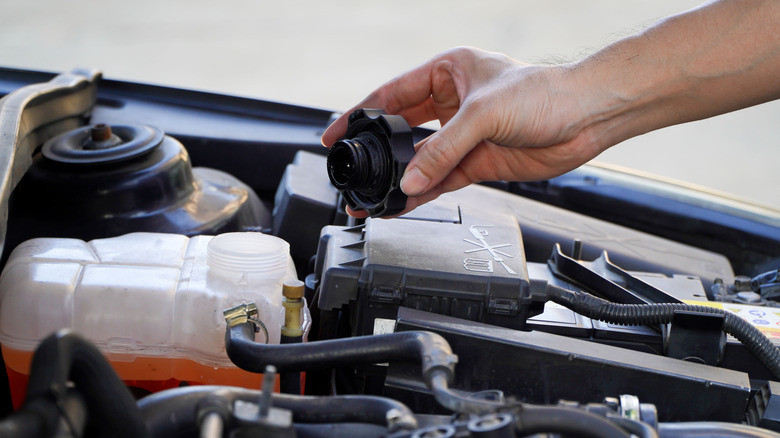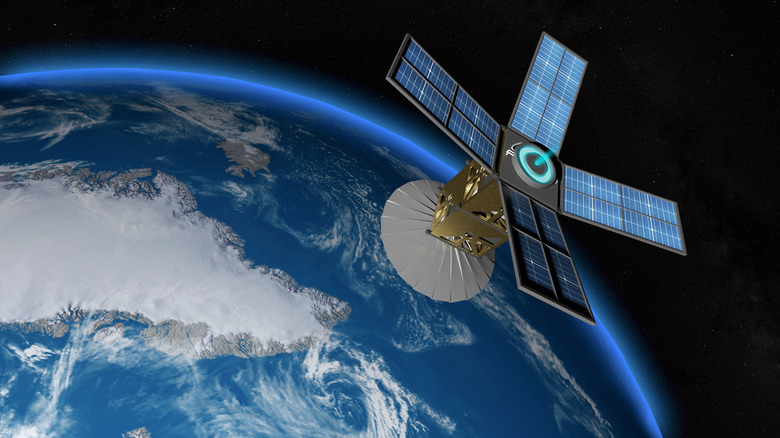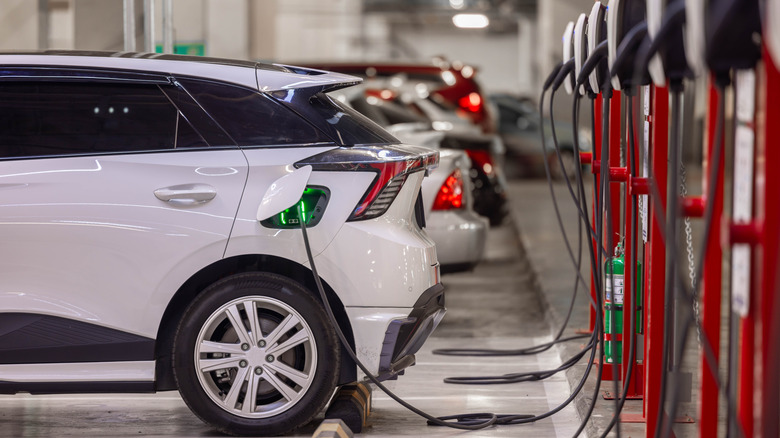Do Water Powered Engines Really Exist?
With more and more countries investing in green energy, people are constantly looking for new sources of power to heat their homes and run their electronic devices. Water makes up 71% of the Earth's surface, and it's renewable, so it makes sense that some might start looking to power engines with it.
A traditional internal combustion engine generates power using combustible oil products like gasoline to activate a spark plug that moves the pistons in the engine to power the device hooked up to it, like a car or an electric generator. Unfortunately, water is not combustible — it is unable to create the spark necessary to be used in a traditional engine. That doesn't mean it can't be used for propulsion, though. It simply means that scientists need to develop a new propulsion system that uses water to generate energy. And according to NASA, such a thing might be possible in the future.
New propulsion system experiments
NASA has published a research paper that details a new experimental propulsion system that could use water to power devices in the future with some refining. Water is a molecule made up of two oxygen atoms and one hydrogen atom, and hydrogen fuel is among the most potent fuels in the world. However, as long as the hydrogen atoms in water are bound to oxygen, they can't be used for fuel. So, it's necessary to split the molecule before you can utilize the hydrogen in it for fuel.
According to the paper, splitting water molecules using electrolysis could turn water into a viable fuel source for engines. And using it could bring about several significant benefits that traditional fuels lack. For instance, water is non-volatile in its most basic form, making it safer to transport between stations and devices. It's also not a pollutant, meaning water spills won't necessarily devastate local wildlife.
Practical experiments with electrolysis propulsion
While electrolysis propulsion might sound like a pie-in-the-sky dream, NASA is already performing practical experiments using electrolysis propulsion in spacecraft design. The CubeSat satellites will use electrolysis propulsion engines supplemented with solar panels to power movement. These satellites can produce small bursts of motion using electrolysis propulsion engines. The bursts of energy from were strong enough to create significant movement in the confines of space — promising results that warrant additional research to see if this technology has wider applications.
One of the most attractive features of electrolysis propulsion is that the technology is exceptionally safe to test, making it easier to find qualified researchers and technicians to research and innovate on it. As we mentioned above, water is not volatile in its base state, which means that the researchers and technicians aren't at risk of setting off an explosion or inhaling toxic fumes while working.
Could all devices use electrolysis propulsion?
With the practical use of electrolysis propulsion proven as effective at moving satellites, it might be reasonable to question why this technology isn't being implemented on the ground. There is a major downside to electrolysis propulsion in the state in which it currently exists that precludes it from powering larger vehicles. While electrolysis propulsion can create short bursts of high energy, the keyword to absorb there is "short." In space, where satellites operate, everything is weightless. A short burst of energy will set an object in motion and allow it to continue moving until stopped with a counteractive burst of energy in the other direction. A car would need a continuous stream of propulsion that would burn through a tank of water in no time, making it nearly impossible to use this technology in this application at the moment.
Additionally, while water might be non-volatile, plain hydrogen is exceptionally volatile. Car exhaust pipes vent the fuel byproducts out of the engine, which in this case would include the volatile hydrogen molecules. If driving in front of someone while the car vented pure hydrogen out of the exhaust pipe on a mass scale, the people behind the car could suffer from toxicity or other effects of the volatility of hydrogen.
So, while water-powered engines do exist and have practical applications in space exploration, we're unlikely to see them rolling around in ground-level cars any time soon.



